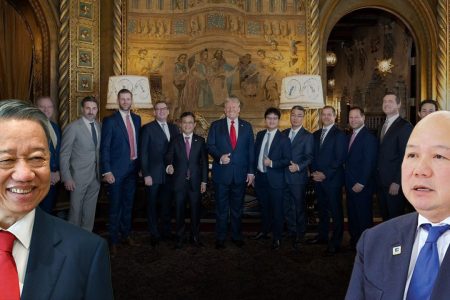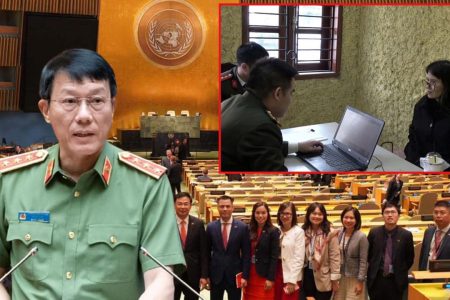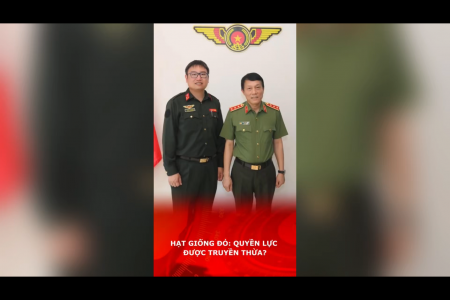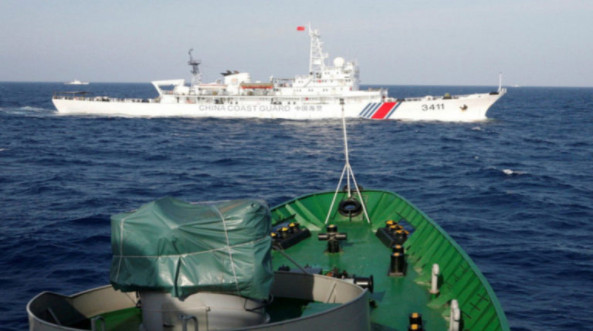
China on November 4, 2020, publicly released a draft amendment to allow its China Coast Guard to use weapons in waters that Beijing considers under China’s jurisdiction. According to political observers, the Chinese National People’s Congress will approve it during its session in December.
The draft allows the Coast Guards to use weapons to drive away foreign ships that are considered to encroach on Chinese territorial waters, or to interrogate their crews, and to use weapons against foreign ships which do not obey by China’s forces in China’s territorial sea, exclusive economic zone and continental shelf. The draft was announced in the context of China’s increased presence of the China Coast Guard in the East Sea (South China Sea) and illegal actions to harass ships of some countries in the region, including Vietnamese fishermen’s ships.
Master Hoang Viet added about this bill:
“This is not an amendment but a new law, which can be called China’s Coast Guard law for short. This law allows China’s Coast Guard to use weapons in case of danger or threat of encroachment in China’s maritime zones.
In addition, it will also give the China Coast Guard more broad power, including in the air of the exclusive economic zone and the man-made structures that China had developed in the Truong Sa (Spratlys) and the Hoang Sa (Paracels). The Coast Guard also has the right to seize foreign fishing vessels that infringe on the waters that China claims. They also have the right to destroy the artificial islands in this area.”
Dr. Nguyen Quang A, a member of the South China Sea Research Fund, said that this is a dangerous escalation for China in the South China Sea next to the trap calling the waters in the U-shaped line that China has drawn itself as the disputed sea.’ He analyzed:
“From the fact that there is no dispute at all to having a dispute is because China jumped in to claim it. Unfortunately, the international media has fallen into its very dangerous trap by calling the waters in the U-shaped line disputed waters, as the Chinese call it. Now that the law allows the use of force in such areas, it is extremely dangerous. This can lead to unpredictable conflicts.“
The U-shaped line is the common name for the 9-dash dotted line that China unilaterally outlines in the South China Sea to claim sovereignty of nearly 90% of this sea area. The U-shaped line first appeared in February 1948 under the Chiang Kai-shek government.
On July 12, 2016, the International Permanent Court of Arbitration in The Hague ruled on the lawsuit between the Philippines and China regarding disputes in the South China Sea. The court ruling determined that all disputed entities in the Spratly archipelago were not islands that could sustain longevity and therefore could not have exclusive economic zones. This also applies to Ba Binh Island, the largest island in Truong Sa currently controlled by Taiwan. The ruling also denied China’s U-shaped line in the South China Sea and determined that the entire Spratly archipelago could not have the baseline as required by China so far.
China stated that it did not accept or participate in the arbitration process initiated by the Philippines.
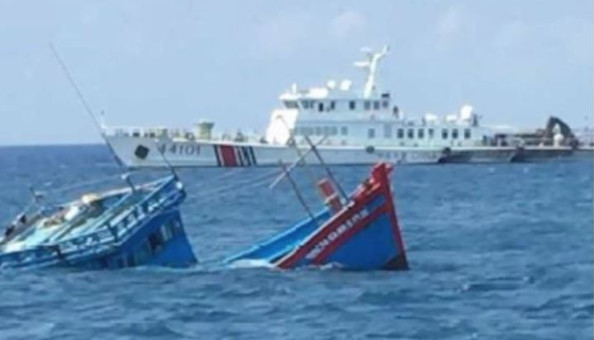
With the release of China’s Coast Guard bill, one day later, the Deputy Spokesperson of the Ministry of Foreign Affairs of the Government of Hanoi, Mr. Duong Hoai Nam, reaffirmed that Vietnam has sufficient historical evidence to confirm its sovereignty over the two archipelagos of Truong Sa and Hoang Sa. Vietnam always supports the settlement of disputes through peaceful negotiation, on the basis of international law, including the 1982 United Nations Convention on the Law of the Sea.”
According to Master Hoang Viet, for many years China has blatantly invaded Vietnam’s maritime areas, sank fishing ships, prevented other ships from coming to rescue, and arrested Vietnamese fishermen, and plundered property. The Vietnam Fisheries Association calls these actions „unruly and inhumane“ aimed at Vietnamese fishermen. Now that there is such a law on Coast Guard, Vietnam cannot just raise an objection, because that is not enough.
Mr. Hoang Viet added:
“With China allowing the Coastal Guard to use weapons, turning the force into a paramilitary and paramilitary force will lead to the near future, Chinese fleets encroach on the sea of other countries that can use force will be very dangerous.“
According to a report of Quang Ngai Fisheries Association on June 10, 2020, the fishing boat QNg 96416 is owned by fishermen captain Nguyen Loc and 15 workers were fishing in the Linh Con island area of Hoang Sa archipelago. Vietnam was attacked by the Chinese Coast Guard which beat fishermen, arrested and fingerprinted on the minutes written by China. The Chinese Coast Guard also took two locators and fish detectors, a basket boat, five airbags, a ton of seafood and damaged many parts of the hull. The damage is estimated at about VND500 million ($21,000).
Dr. Ha Hoang Hop said that the new Chinese Coast Guard law violates all the foundations of international law as well as the international conventions on the law of the sea. One of the basic rules is that when a dispute arises, the countries concerned must leave the status quo and not use force. Moreover, China’s U-shape line that takes almost 90% of the South China Sea area, according to PCA 2016, is not Chinese, but China still considers it to be a disputed area. Mr. Hop analyzed what he called “serious” when this law was enacted:
“What are its defense and geopolitical consequences? That is if shooting civilian ships or other ships at sea with a gun is an act of war. War action will be answered by war. It’s serious there. It is not that simple. That is an act of provocation to fight, to cause war. China is preparing war to attack Taiwan and attack Vietnam in Truong Sa. Vietnam must first object. Next, be prepared to fight back if they shoot. If they shoot, Vietnam must shoot again.
With this law, it is not that China only protects the islands within 12 nautical miles as ever, but the entire sea. They do so to underestimate America. They think that the United States in such an election will be a good opportunity for them to mess around and do everything.”
By the end of 2019, the Chinese Coast Guard had 130 patrol boats, including ships of up to 10,000 tons – among the largest in the world. In addition, many other ships are also equipped with large guns of the 76mm type, as well as a variety of machine guns.
The Chinese Coast Guard in recent years has been integrated into the armed police force and the coastguard fleet has been upgraded with larger ships.
Thoibao.de (Translated)
Source: https://www.rfa.org/vietnamese/in_depth/the-new-chinese-maritime-law-danger-dt-11122020130149.html














